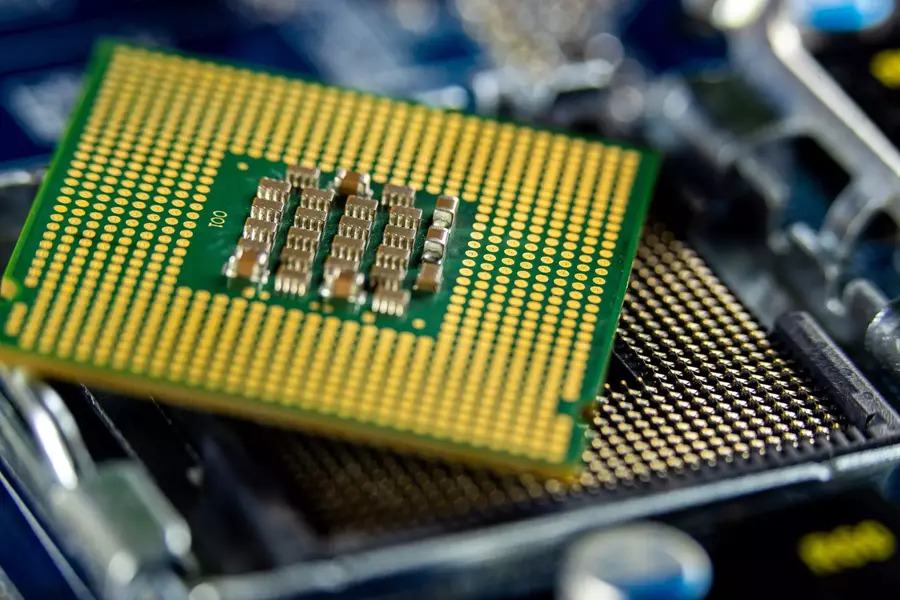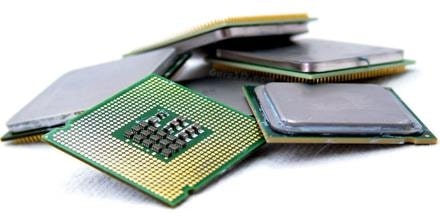When it comes to processors, understanding cores is essential for choosing the right device for your needs.
A core in a processor is an individual processing unit within the CPU that handles tasks and executes instructions. Multiple cores in a CPU allow better multitasking and faster performance by processing data simultaneously.
In this guide, we’ll explore the importance of processor cores and how they affect speed and multitasking. It will also help you understand how to choose the right one for your needs.
Understanding a Processor Core
A processor core is like a tiny brain inside your computer’s CPU. It handles tasks and processes information. In the past, processors had only one core, meaning they could do just one thing at a time.
Modern CPUs now have multiple cores, allowing them to handle several tasks simultaneously. More cores mean better multitasking and faster performance.
For example, while one core loads a game, another can manage background tasks, making everything smoother and more efficient.
Single-Core vs. Multi-Core Processors

1. Single-Core Processors
A single-core processor has only one core to handle tasks. This means it can do only one thing at a time. If you open too many programs, your computer will slow down.
Older computers use single-core processors, but they struggle with multitasking. They are now outdated because modern applications need more power to run smoothly.
2. Multi-Core Processors
A multi-core processor has two or more cores, allowing it to do multiple tasks simultaneously. This makes your computer faster and better at multitasking.
For example, one core can run a game while another handles background apps. Most modern computers and smartphones use multi-core processors because they provide better speed, efficiency, and smoother performance.
Types of Multi-Core Processors
- Dual-Core – Has two cores, making it faster than a single-core processor. Good for basic tasks like web browsing and office work.
- Quad-Core – Has four cores, allowing better multitasking. Great for gaming and everyday use.
- Hexa-Core – Has six cores, offering better performance for editing and streaming.
- Octa-Core – Has eight cores, handling heavy tasks like video editing.
- Deca-Core & Higher – Ten or more cores are used for high-end gaming, 3D rendering, and professional work.
Types Of Core In Computer
- Physical Core – Actual hardware cores inside a CPU that process tasks. More cores mean better multitasking.
- Logical Core – Created by Hyper-Threading or SMT (Simultaneous Multithreading) to improve efficiency.
- Performance Core – Designed for heavy tasks like gaming and editing. Found in high-end CPUs.
- Efficiency Core – Uses less power and is great for background tasks. Helps save battery life in laptops and mobiles.
- Dedicated Core – Special cores for modern processors’ AI, graphics, or security tasks.
Also Read: Is The I3 Processor Good For Gaming – Performance Review!
How Multiple Cores Improve Performance
More cores mean a processor can handle many tasks at once. This improves speed and multitasking. For example, while one core loads a webpage, another plays a video.
Multiple cores help with gaming, video editing, and heavy applications. They also reduce lag and improve efficiency, making computers faster and smoother for everyday use.
Hyper-Threading vs. Multi-Core Processors
Hyper-Threading lets one core act like two, helping it handle more tasks. But it’s not as powerful as having actual extra cores. Multi-core processors have real physical cores, making them faster.
Hyper-Threading is useful, but a true multi-core processor is better for gaming, editing, and running heavy applications. Both improve performance but work differently.
Impact of Cores on Gaming

More cores can improve gaming, but not all games use them efficiently. Most modern games work best with at least four to six cores.
Extra cores help with background tasks, like recording gameplay or running game mods. However, clock speed and graphics card power are also important for gaming, not just the number of cores.
Cores and Productivity Applications
Cores help run heavy programs like video editing, 3D modeling, and coding software. More cores speed up rendering, compiling, and simulations.
For example, editing a video on a quad-core processor takes longer than on an octa-core. If you use software like Photoshop or Premiere Pro, having more cores makes everything smoother and faster.
Cores in Mobile Processors
Smartphones use multi-core processors to balance speed and battery life. High-performance cores handle gaming and apps, while efficiency cores save power for background tasks.
This helps phones run fast without draining the battery too quickly. Modern smartphones have at least six to eight cores, ensuring smooth multitasking, better gaming, and efficient power usage.
Cores and Power Consumption
More cores can use more power, but modern processors are designed to be energy efficient. Many CPUs turn off unused cores to save battery life.
Laptops and smartphones use efficiency cores for light tasks and performance cores for demanding tasks. This smart power management helps balance performance and energy use, keeping devices running longer.
ARM vs. x86 Multi-Core Processors
ARM processors are designed for power efficiency in smartphones and tablets. x86 processors are used in desktops and laptops and are built for high performance.
ARM chips use less energy, making them great for battery life. x86 chips are more powerful and better for gaming and heavy tasks. Each type is optimized for different needs and devices.
The Future of Multi-Core Processors
Future processors will have more cores, better power efficiency, and AI features. Companies are developing CPUs with advanced core technology to handle AI, gaming, and heavy tasks.
As software improves, more cores will be useful for everyday applications, making computers faster, smarter, and more efficient for all users.
Must Know: Do Intel K Processors Have Integrated Graphics: Must Read!
How to Choose the Right Number of Cores
- For basic tasks (web browsing, office work): 2 to 4 cores are enough.
- For gaming: 4 to 6 cores are ideal for smooth performance.
- For video editing or content creation: 6 to 8 cores help speed up rendering and processing.
- For heavy workloads (3D rendering, professional work): 8 or more cores are needed for better performance.
- Consider your budget: More cores cost more but provide better multitasking.
Common Myths About Processor Cores
- “More cores always mean better performance” – Not true! It depends on the software and how it uses the cores.
- “Single-core performance doesn’t matter” – Actually, it’s important for tasks that need high speed and less multitasking.
- “More cores use more power all the time” – Modern CPUs manage power well, turning off unused cores.
- “More cores make everything faster” – Some apps don’t need many cores, so more doesn’t always mean faster.
How Many Cores In Computer

Depending on their purpose, computers can have 2 to 64 or more cores. Basic tasks like browsing work fine with 2-4 cores, while gaming and editing need 6-8 cores.
High-performance computers for 3D design or programming may have 12 or more cores for faster processing and better multitasking.
What Does Core Mean In A Processor Laptop
A processor core in a laptop is like a mini-brain that handles tasks. More cores mean better multitasking and performance.
Laptops usually have 2 to 8 cores. A dual-core is good for basic work, while a quad-core or more is better for gaming, editing, and professional use.
Number Of Cores Meaning
The number of cores in a processor tells how many tasks it can handle at once. More cores mean smoother multitasking and faster performance.
For example, a quad-core processor can manage four tasks simultaneously, while an octa-core processor can handle eight, making everything run more efficiently and quickly.
What Are CPU Cores And Threads
CPU cores are physical parts that process data, like workers in a factory. Threads are virtual instructions that help cores do more tasks at once.
More cores and threads improve multitasking. For example, Hyper-Threading allows one core to handle two tasks, making the CPU work more efficiently.
You Should Know: Whats The Best Processor For My B450 Aorus M: Exploring!
What Does Core Mean In A Processor Gaming
In gaming, a processor core helps run the game and background tasks. Most modern games run best with at least 4 to 6 cores.
More cores help with multitasking, like streaming while gaming. However, clock speed and GPU power are also important for smooth, high-quality gaming performance.
Number Of Cores In Laptop Means
The number of cores in a laptop determines its speed and multitasking ability. A laptop with 2 cores is good for basic tasks, while 4 or more cores improve gaming, editing, and heavy software performance. More cores help handle multiple applications smoothly, making the laptop faster and more efficient.
FAQs
1. Which is better, 4 cores or 8 cores?
8 cores are better for multitasking and heavy tasks like gaming or editing, but 4 cores are fine for everyday use like browsing and office work.
2. Does 4 cores mean 4 processors?
No, 4 cores mean a processor with four parts to handle tasks. It’s still one processor but can work on multiple tasks simultaneously.
3. How many cores on a CPU is good?
For basic use, 2 to 4 cores are enough. For gaming or editing, 6 to 8 cores work best. More cores help with multitasking.
4. Does 8 cores mean 8 CPUs?
No, 8 cores mean one processor with eight parts inside. Each core can work on separate tasks, but it’s still one CPU, not eight.
5. Is 8 cores CPU overkill?
Not necessarily! 8 cores are great for gaming, video editing, or 3D rendering. If you need more performance, 8 cores are useful.
Conclusion
In conclusion, processor cores are crucial for determining performance and multitasking ability. Whether browsing, gaming, or working with heavy applications, understanding how many cores you need helps you choose the right CPU. More cores generally mean better efficiency, but balance with your specific use case and budget is key.











